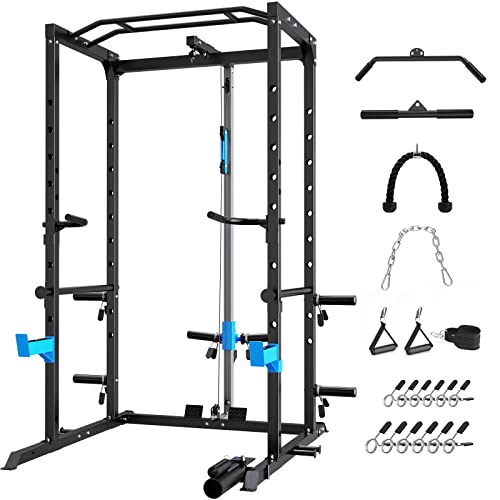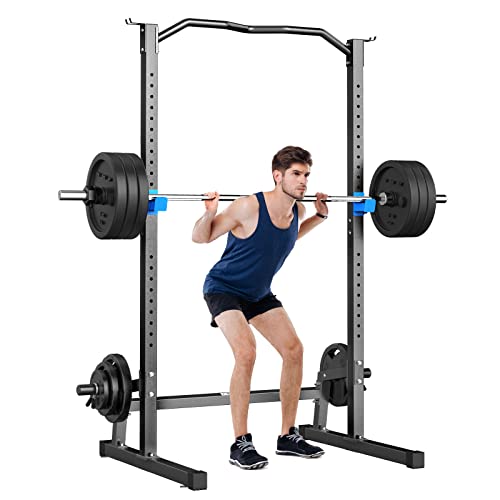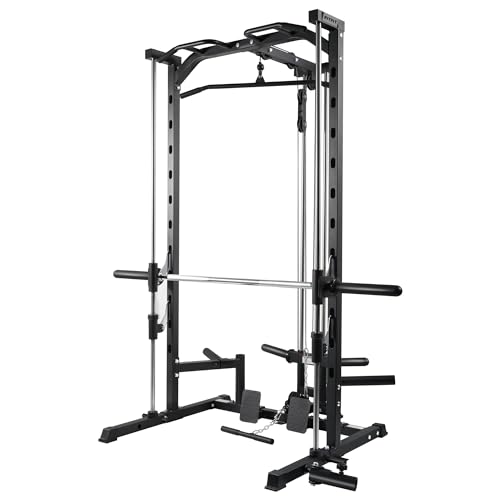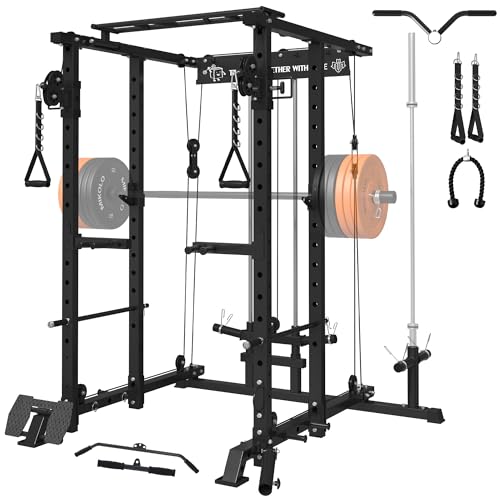Welcome to our guide on building muscle and increasing strength. In this article, we will explore the science behind muscle hypertrophy, the role of skeletal muscles, hormones, and the importance of strength and resistance training. We will also discuss the crucial role of protein intake in muscle development. All the information provided is based on the book Building Muscle and Performance: A Program for Size, Strength & Speed by Nick Tumminello, a renowned expert in the field. So let’s dive in and discover the key strategies for achieving your muscle-building goals.
Key Takeaways:
- Building muscle and increasing strength requires the right exercises and nutrition.
- Skeletal muscles play a crucial role in muscle development.
- Hormones such as testosterone, growth hormone, and insulin growth factor contribute to muscle growth.
- Strength and resistance training stimulate muscle growth and improve muscle function.
- Adequate protein intake is essential for muscle development.
Factors Affecting Muscle Growth
Several factors can affect the rate at which a person can grow muscle. Age, sex, and genetics all play a role in muscle development. Both males and females can build muscle, but growth rates may differ due to hormonal differences and body types. Understanding your body type and genetic predisposition can help tailor your muscle-building approach.
Aging and Muscle Growth
As we age, muscle growth becomes more challenging. The gradual decline in muscle mass and strength that occurs with aging is known as sarcopenia. Hormonal changes, such as a decrease in testosterone and growth hormone levels, can contribute to this decline. However, engaging in regular strength training exercises can help mitigate the effects of aging on muscle growth.
Sex and Muscle Growth
While both males and females can build muscle, there are some differences in how each sex responds to training. Males generally have higher testosterone levels, which can enhance muscle growth. However, females can also build muscle effectively through resistance training. The key is to design a workout program that suits your individual needs and goals.
Genetics and Muscle Growth
Genetics also play a role in determining how easily you can build muscle. Some individuals may have a genetic predisposition for fast muscle growth, while others may have to work harder. Mesomorphic individuals, who have a naturally muscular body type, tend to build muscle mass more quickly. Ectomorphic individuals, who have a slim or straight frame, may have a lower chance of building muscle mass but can still increase strength through resistance training. Endomorphic individuals, who have a rounded or curvy body type, can effectively build muscle through strength training.
$749.99
$699.99
4.49 out of 5 starsMikolo Power Cage with Weight Bench & Accessories
All-in-One Home Gym System for Total Body Workouts
Product information
Product Review Score
Product links
“Understanding your body type and genetic predisposition can help tailor your muscle-building approach.” – Nick Tumminello, Building Muscle and Performance
| Factors | Impact on Muscle Growth |
|---|---|
| Age | Gradual decline in muscle mass and strength due to hormonal changes |
| Sex | Differences in hormone levels, with males generally having higher testosterone levels |
| Genetics | Variations in natural body type and genetic predisposition for muscle growth |
| Body Types | Different body types respond differently to training methods |
The Importance of Strength Training
Strength training is a crucial component of building muscle and increasing strength. By engaging in exercises that challenge the muscles with higher levels of resistance or weight, individuals can stimulate muscle hypertrophy, or muscle growth.
According to the Physical Activity Guidelines for Americans, adults should aim to incorporate muscle-strengthening exercises into their fitness routine at least twice a week. These exercises can include:
- Lifting weights: By using dumbbells, barbells, or kettlebells, individuals can target specific muscle groups and progressively increase the weight as they get stronger.
- Weight machines: Exercise machines allow for focused and controlled movements that isolate specific muscle groups, making them ideal for beginners or individuals with specific training needs.
- Resistance bands: These flexible bands provide resistance throughout the entire range of motion and are a versatile tool for strength training both at home and at the gym.
- Bodyweight exercises: Movements such as push-ups, squats, and lunges use a person’s body weight as resistance and can effectively build muscle strength and endurance.
To achieve optimal muscle growth and strength gains, it is essential to approach strength training with consistency and challenge. Consistency ensures that the muscles are consistently stimulated, while progressively increasing the challenge by gradually increasing resistance or weight encourages continuous adaptation and growth.
With a long-term commitment to strength training and adherence to the recommended Physical Activity Guidelines, individuals can achieve their goals of building muscle, increasing strength, and improving overall physical performance.
| Benefits of Strength Training | How to Incorporate Strength Training |
|---|---|
|
|
Bongkim Power Rack - Adjustable Squat Stand 660lb
Ideal for weightlifting and strength training at home, the Bongkim Power Rack is a sturdy and durable adjustable squat stand capable of supporting up to 660lb
Product information
$299.99
Product Review Score
4.8 out of 5 stars
76 reviews
Product links
Bongkim Power Rack - Adjustable Squat Stand 660lb
Ideal for weightlifting and strength training at home, the Bongkim Power Rack is a sturdy and durable adjustable squat stand capable of supporting up to 660lb
Product information
$299.99
Product Review Score
4.8 out of 5 stars
76 reviewsProduct links
The Role of Cardiovascular Activity
While strength training is crucial for building muscle, cardiovascular activity also plays a significant role in muscle growth. Incorporating regular cardio exercise into your fitness routine offers various benefits for overall fitness and muscle development.
According to the Physical Activity Guidelines for Americans, adults should engage in at least 150 minutes of moderate-intensity or 75 minutes of vigorous-intensity cardiovascular activity each week.
Cardiovascular activity supports muscle growth by:
- Improving blood circulation: Enhancing blood flow throughout the body ensures that oxygen and nutrients are efficiently delivered to the muscles, promoting growth and recovery.
- Enhancing nutrient uptake: Increased cardiovascular activity aids in nutrient absorption, allowing muscles to receive the necessary fuel for growth and repair.
- Promoting fat loss: Cardio exercise helps burn calories and reduce excess body fat, unveiling the muscles beneath and enhancing their definition.
Aerobic exercises, such as running, cycling, swimming, and brisk walking, are excellent choices for cardiovascular activity. To optimize muscle growth, it’s recommended to perform aerobic exercise at 70-80% of your heart rate reserve for 30-45 minutes, on 4-5 days per week.
By incorporating cardiovascular activity into your fitness routine, you can maximize muscle growth, improve overall fitness levels, and reduce the risk of injuries. The combination of strength training and cardio exercise provides a comprehensive approach to achieving your muscle-building goals.
The Importance of Rest and Recovery
In our pursuit of muscle growth and overall fitness, rest and recovery often take a backseat. However, they are crucial components of any effective training program. Adequate rest between strength training sessions allows our muscles to repair and rebuild, leading to muscle hypertrophy and improved performance.
Working the same muscle group on consecutive days can hinder our progress and increase the risk of overuse injuries. We must give our muscles enough time to recover and adapt to the stress placed upon them during training.
Sleep also plays a vital role in muscle growth. During sleep, our bodies engage in protein synthesis, the process by which new proteins are formed to repair and build muscle tissue. Without sufficient sleep, protein synthesis is impaired, hindering muscle recovery and growth.
Additionally, sleep deprivation can increase cortisol levels in our bodies. Cortisol is a stress hormone that, when elevated, can lead to muscle breakdown and hinder muscle development. By prioritizing quality sleep, we can support protein synthesis, reduce cortisol levels, and promote optimal muscle growth.
Reducing stress levels is another crucial aspect of rest and recovery. Excessive stress can contribute to elevated cortisol levels and hinder muscle growth. Incorporating stress management techniques such as meditation, deep breathing exercises, or engaging in hobbies can help mitigate the negative effects of stress and create a more conducive environment for muscle development.
Benefits of Proper Rest and Recovery:
- Promotes muscle repair and growth
- Enhances muscle performance and strength
- Reduces the risk of overuse injuries
- Fosters better sleep and supports protein synthesis
- Controls cortisol levels and reduces stress
By prioritizing rest, sleep, and stress management, we can optimize our muscle growth and overall well-being. Incorporating dedicated rest days into our training schedule, prioritizing quality sleep, and implementing stress reduction techniques will create an environment that supports muscle development and enhances our fitness journey.
Reference
Information in this section is based on the book “Building Muscle and Performance: A Program for Size, Strength & Speed” by Nick Tumminello.
Building Muscle and Increasing Strength: A Holistic Approach
When it comes to building muscle and increasing strength, it takes more than just hitting the gym. It requires a holistic approach that encompasses a balanced diet and regular resistance training. By adopting this comprehensive lifestyle, you can achieve your muscle-building goals and maintain a strong and healthy physique.
A balanced diet is the foundation of muscle maintenance and growth. Consuming sufficient protein, along with complex carbohydrates and healthy fats, provides the necessary nutrients to fuel your muscles. Protein is particularly essential as it serves as the building blocks for muscle tissue. Incorporating lean meats, fish, dairy products, and plant-based protein sources into your diet ensures you have the fuel your muscles need to grow and thrive.
Resistance training, such as strength training, is another crucial element of the muscle-building equation. It stimulates muscle growth and improves muscle function by placing a controlled load on the muscles. By engaging in regular resistance training exercises, you can promote muscle hypertrophy and increase your overall strength. Remember to vary your exercises and target different muscle groups for balanced development and prevent muscle imbalances.
Leading an active lifestyle is also key to building muscle and increasing strength. Staying active throughout the day, in addition to your dedicated workout sessions, helps maintain muscle mass and prevent muscle loss. Incorporating activities like walking, jogging, cycling, or participating in sports not only benefits your cardiovascular health but also supports overall muscle development. By making physical activity a part of your daily routine, you can enjoy the rewards of an active and healthy lifestyle.
FAQ
How can I build muscle and increase strength?
Building muscle and increasing strength requires a combination of correct exercises and adequate nutrition. By engaging in strength and resistance training and consuming sufficient protein, you can effectively stimulate muscle growth and improve muscle function.
What factors can affect the rate at which I grow muscle?
Several factors, including age, sex, and genetics, can influence muscle development. Understanding your body type and genetic predisposition can help tailor your muscle-building approach to achieve optimal results.
How important is strength training for building muscle?
Strength training is crucial for building muscle as it stimulates muscle hypertrophy. Engaging in muscle-strengthening exercises such as lifting weights, using resistance bands, or performing bodyweight exercises, at least twice a week, can help you achieve optimal muscle growth and strength gains.
What is the role of cardiovascular activity in muscle growth?
Cardiovascular activity offers benefits for muscle growth by supporting overall fitness levels and reducing the risk of injury. Engaging in at least 150 minutes of moderate-intensity or 75 minutes of vigorous-intensity cardiovascular activity each week can help maximize muscle growth.
How important is rest and recovery for muscle growth?
Rest and recovery play a critical role in muscle growth. Allowing sufficient rest between strength training sessions and getting an adequate amount of sleep support muscle repair and protein synthesis. Avoiding consecutive days of working out the same muscle group and managing stress levels further contribute to better muscle development.
What is the best approach to building muscle and increasing strength?
Building muscle and increasing strength require a holistic approach that includes a balanced diet and regular resistance training. Consuming a diet with sufficient protein, complex carbohydrates, and healthy fats, along with engaging in resistance training like strength training, can help you maintain muscle mass, prevent muscle loss, and enjoy an active and healthy lifestyle at any age.








